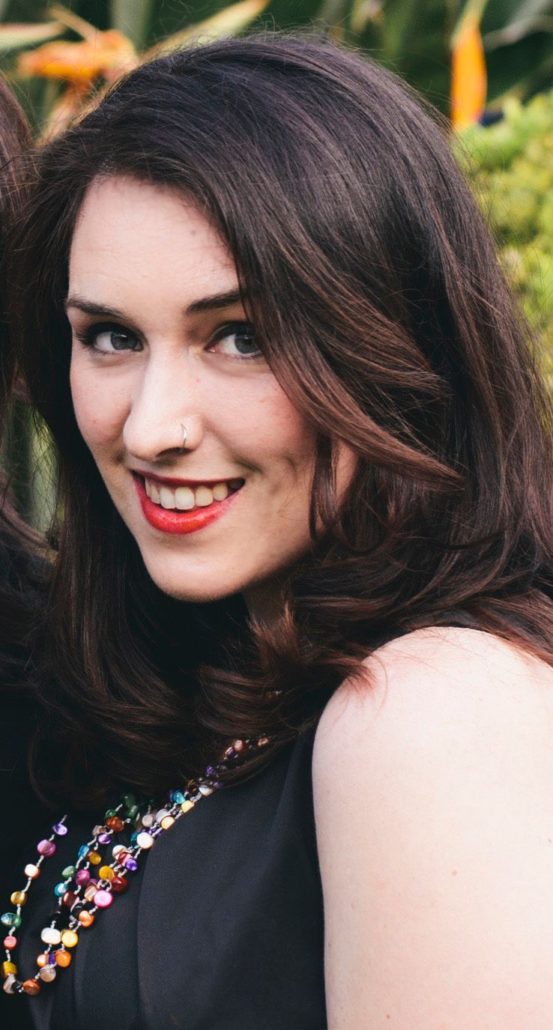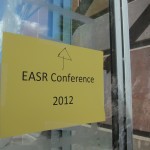 Ends and Beginnings: A Reflection on the 2012 EASR Conference
Ends and Beginnings: A Reflection on the 2012 EASR Conference
By Venetia Robertson, University of Sydney
A Religious Studies Project Conference Report, published on 27 September 2012. European Association for the Study of Religions – 23-26 August 2012 – Stockholm, Sweden
Some months ago, I was encouraged by my supervisor, Jay Johnston, to submit abstracts to the 2012 EASR and the 1st International Conference on Contemporary Esotericism. Much to my delight, I ended up attending and presenting at both of these amazing events in August. I would like to share with you some of my experiences from this intense, week-long symposium.
EASR 2012 – Ends and Beginnings
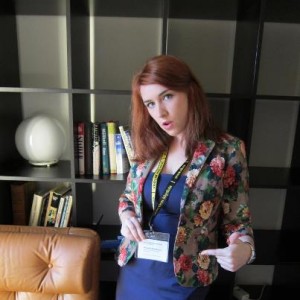
To open the 2012 conference for the European Association for the Study of Religions (in conjunction with the International Association for the History of Religion) at Södetörn University, Stockholm, Ingvild Sælid Gilhus tackled the theme of ‘Ends and Beginnings’ by talking about the ‘founding fathers’ of our discipline. As we mulled over Müller and theorised Freud (what were their motivations? Where did they locate the origins of religion?) the inevitable question that kept repeating in my mind was, ‘where are the founding mothers?’ Mary Douglas, Gilhus added, could be considered a founding mother for sure, but this concession does little to address the white male dominance of the humanities in general. But as I looked around the packed auditorium at the sea of heads belonging to people of all genders, all ages, all stages of their careers, I felt some comfort. In my (albeit limited) experience of international conferences, I have been frequently mislabeled as someone’s wife or daughter, rather than a scholar in my own right, or, for that matter, a presenter intending to deliver a paper. In Stockholm for a solid week of conferencing, I made it my aim never to be mislabeled, and in this atmosphere of diversity coupled with solidarity, I don’t think at any point I was.
If I had to choose I would say my favourite thing about these conferences was seeing young and vibrant postgraduate students presenting their craft. I was continuously impressed and excited by the high quality scholarship, ideas, and conversations presented and stimulated by my peers. This year’s EASR delivered an incredibly extensive program. Four days with as many as twelve parallel sessions per session, this conference featured hundreds of speakers. Topics ranged from the Arab Spring to apocalypticism, ecology to esotericism, Pureland to popular culture, and almost everything in between. Of course this leads to the problems that plague all good conferences – one cannot get to see everything they would like to, if speakers drop out and the order is changed scheduling can be even more complicated, etc. Some rooms saw overwhelming popularity – not an inch of space could be spared for latecomers hoping to see Jörg Rüpke talk about death in lived religion! Luckily for me, my session saw no lack of seats. I was speaking in the aula, the massive main hall set aside for keynotes and network sessions.
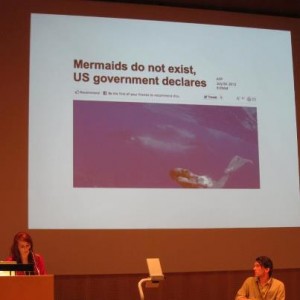
I spoke, alongside Manon Hedenborg White (Stockholm University) and Sara Duppils (Åbo Akademi) as part of the Graham Harvey and Donald Wiebe), but I was pleased to see about thirty attendees making that vast space seem a little less empty. Actually, the session was very enjoyable as we three (all still students) presented on vastly different topics – Manon on gender in Wicca, Sara on ‘neo-spiritism’ and paranormal beliefs online, and I on Therianthropy and animal-human identity. The response from the audience was brilliant, with intelligent and genuinely engaged questions, suggestions, and comments. This level of interest was followed up with the exchanging of emails, soliciting of articles, and promises to publish forthwith! Nothing is so inspiring as getting the opportunity to pull your head of the proverbial arse of thesis-land to experience an international community of your colleagues understanding and encouraging your seemingly obscure area of interest.
It was disappointing to miss hearing from speakers who pulled out (Henrik Bogdan, Oliver Krüger) and even more frustrating to fail to catch the brief window given to others. Nonetheless, I saw some provocative and valuable papers. For the sake of convenience, I restricted myself to sessions that directly related to my research interests. This is always a gamble, and can be a little monotonous, but there were certainly some highlights. It was really enjoyable to see Doug Ezzy of the University of Tasmania present on a katabatic ritual performed by Australian neo-Pagans. His personable yet informative delivery, supported by his own photographs of the event, made this talk particularly appealing. Jonas Otterbeck of Lund University gave a very interesting paper on masculinity in the genre of ‘Halal pop.’ Franz Höllinger of the University of Graz presented some intriguing statistics on the political and social attitudes of New Agers in Austria, and Peter Åkerbäck of Stockholm University provided insights into the changing reactions toward ‘cults’ in Sweden by government bodies and ‘cult awareness’ groups. On the second day, the impeccably dressed Kocku von Stuckrad of the University of Gronigen delivered an astute key note that highlighted the imbrication of science and religion, and specifically, the ‘scientification’ of religion, and the ‘religionism’ of science. The overlapping of these two magisteria (to misquote Steven Jay Gould) is a topic eye-opening in its relevance and insidiousness in our field of work.
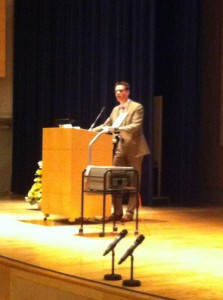
Student speakers also proffered papers that spoke to their burgeoning expertise and laudable research efforts. Sara Duppils and Minja Blom (University of Helsinki) both presented findings from their online research of discussion forums (a still woefully under utilized source pool), Manon Hedenborg White discussed information gathered from her own fieldwork and interviews with British Wiccans, Christian Greer (University of Amsterdam) exhibited his collection of rare and arcane Discordian primary materials, and Kristian Pettersson (Uppsala University) in his talk on entheogens and the spiritual experience, submitted his theory of ‘altered states of perception’ to challenge the more commonly and perhaps mistakenly used phrase ‘altered states of consciousness.’ On the New Religious Movements front, Rasa Pranskeviciute (Vytautas Magnus University) introduced me to two environmentally-minded NRMs that have emerged in the post-Soviet world, the Anastasians and the Vissarionites, while the Raëlians got a reappraisal from Erik Östling (Stockholm University) as a group that relies not only on the Bible, but several works of science fiction in constructing their UFOlogical theology. Many of the papers I saw dealt with the meeting of spirituality and popular culture, and one theme that I felt was overlooked was the paradigm shift involved in making fictional texts sacred texts – a more nuanced understanding of changing attitudes towards the boundaries of fantasy and reality was needed.
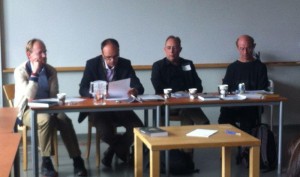
While some student papers were less polished or analytically sophisticated than those of more established scholars, I think it is commendable that conferences like the EASR extend the opportunity for such a number of postgrads (and even the occasional undergrad) to contribute their scholarship to the broader academic community. The fact that so many of the sessions I chose to attend consisted, unbeknownst to me initially, of mostly student presenters strongly suggests that it is a younger generation of scholars that are investigating the ‘alternative’ and ‘fringe’ currents of spirituality which are, ironically, becoming more and more visible, mainstreamed, and imperative to the study of modern religion. In short, these students have their finger on the pulse, and it is events like international conferences that allow the rest of the academic world to learn from these fresh and innovative perspectives.
Of course conferences offer the opportunity for social as well as professional networking (facilitated somewhat by free, room-temperature glasses of box wine). Personal highlights here include discovering that Wouter Hanegraaff’s spirit animal is the Owl, being asked to contribute a paper to Pomegranate, and being invited to speak at the 2013 ISSR Conference in Turku. Ending up at Medusa Bar for a pint and a bit of a headbang with some of the pretty young things wasn’t a bad end to an evening either. But, after four intense days of stimulating conversation, there was little time to rest before it all had to pick up again at the Contemporary Esotericism conference at Stockholm University!
This material is disseminated under a Creative Commons Attribution-NonCommercial-NoDerivs 3.0 Unported License. and can be distributed and utilised freely, provided full citation is given.
About the Author:
 Venetia Robertson is a PhD candidate, tutor, and research assistant at the University of Sydney in the department of Studies in Religion. Her thesis explores themes of animal-human identity, shape-shifting, popular oc/culture, and myth-making. Forthcoming publications include an article that delves into her thesis topic by discussing the online Therianthropy community and non-human ontology, and an article that offers an explication of masculinity, fandom, and the My Little Pony: Friendship is Magic cartoon series. She is currently co-editing an issue of the Journal for the Academic Study of Religion, and will be contributing a paper that looks at the intersections of posthumanism, animality, and eschatology.
Venetia Robertson is a PhD candidate, tutor, and research assistant at the University of Sydney in the department of Studies in Religion. Her thesis explores themes of animal-human identity, shape-shifting, popular oc/culture, and myth-making. Forthcoming publications include an article that delves into her thesis topic by discussing the online Therianthropy community and non-human ontology, and an article that offers an explication of masculinity, fandom, and the My Little Pony: Friendship is Magic cartoon series. She is currently co-editing an issue of the Journal for the Academic Study of Religion, and will be contributing a paper that looks at the intersections of posthumanism, animality, and eschatology.


